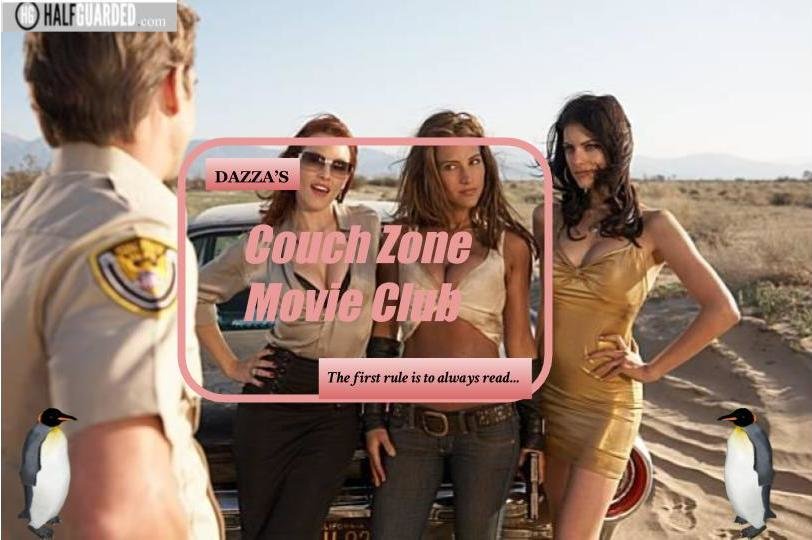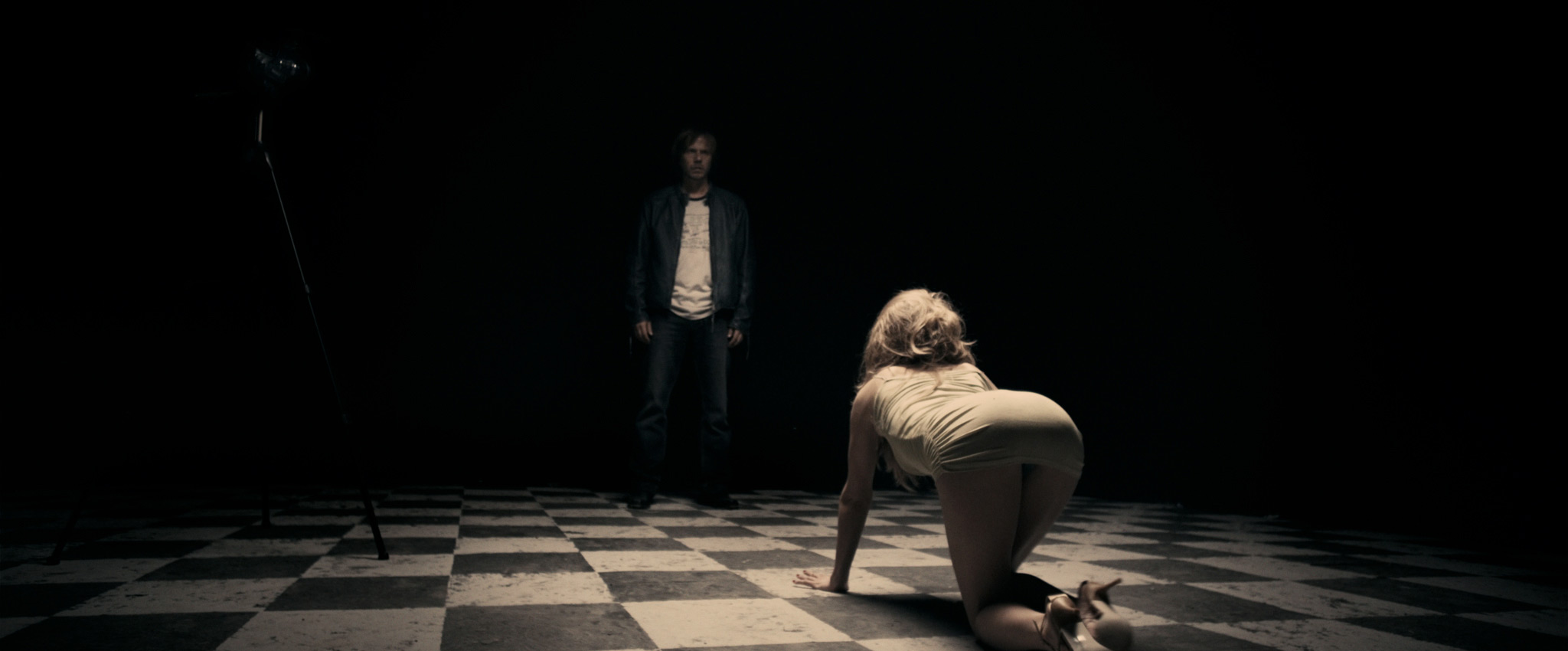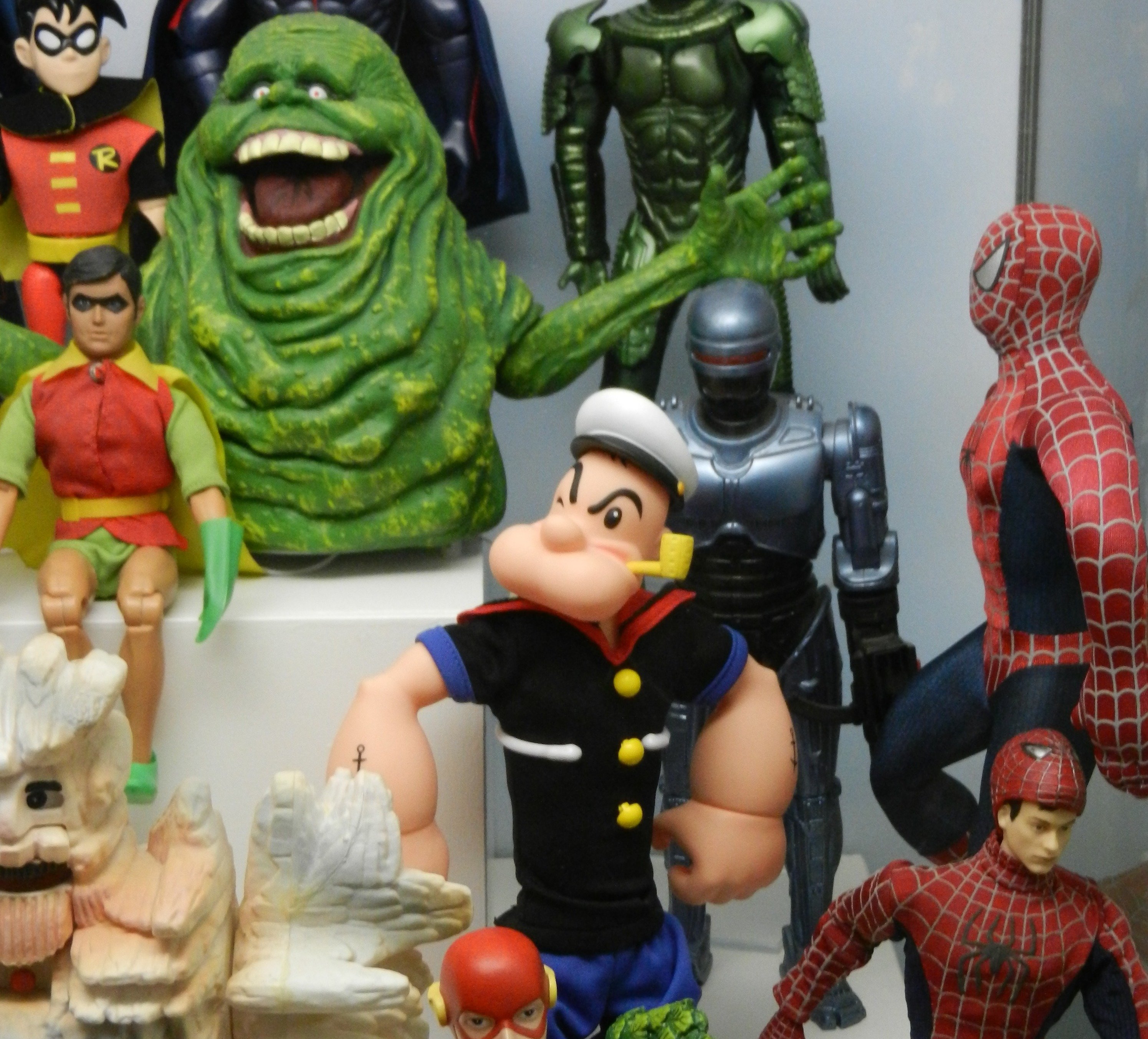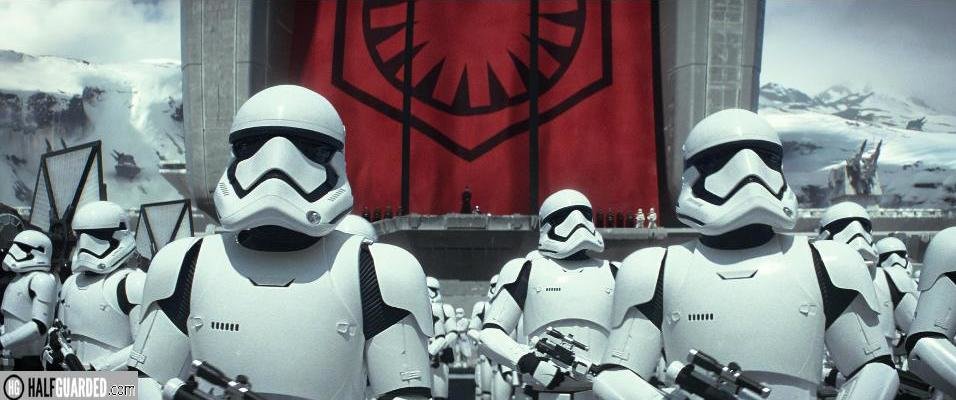When a franchise gets into it’s fifth outing, chances are it’s by now started to go ludicrously over the top and off the rails. By the time you’ve read this you’ll agree that this movie club has definitely embraced that tradition. In all the wrong ways.
Same rules as always. Four movies I’ve enjoyed for many varied reasons, one movie with a cult flavour, one black and white film, one subtitled film and a movie from the last ten years.
Valley of Gwangi 1969

When I was a kid I loved Cowboy movies. When I was a kid I also loved Dinosaur movies. So imagine how giddy as shit I got, when around the age of six I sat down one evening to watch a film that had been made with the genius notion of making a cowboy film and including Dinosaurs in it!
A tacky crossover premise some may say, but boy did Valley of Gwangi pull this off with flair that wowed me as a child and still charms me to this day.
Massively drawing on the plot of King Kong, it follows an ailing rodeo show that discover an area in the Mexican desert where creatures from the prehistoric era still exist. Seeing an opportunity to revitalise their business the group decide to capture and bring back a dinosaur to star as a new attraction, because there is no way an idea like that could ever turn out badly. And so the cowboys target a large Allosaurus known as Gwangi (not a Tyrannosaurus as many seem to remember it as being, although Gwangi’s design borrows elements from both species), and after attempting to lasso the beast (in one of the most striking moments in the movie and was massively complicated to film) end up capturing him and bring him back to Mexico to star in their circus and pray he doesn’t burst free during his first performance and run amok in the town. (spoiler: he bursts free during his first show and runs amok in the town).
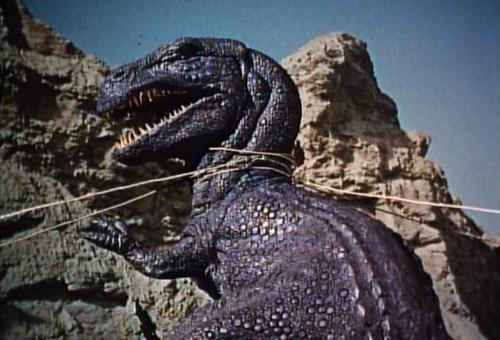
Valley of Gwangi looks glorious, as it perfectly captures the sandy look and feel of an actual western (filming took place in Spain) and the stop motion effects blend perfectly into the setting. The dinosaurs were brought to life by the legendary Ray Harryhausen and while modern day audiences may scoff at the dated look of stop motion, to me while they’re hardly realistic they are lively, full of expression and beautifully textured. I’d take that appealing classic look to cold, empty CGI any time.
Despite the cost and time consuming nature of stop motion, the film never shortchanges it’s audiences. Gwangi appears frequently, chasing and battling the cowboys and engages in several savage fights with other Dinosaurs and a circus Elephant. Such scenes make this a fabulous fun, superior monster movie and in many ways the concept seems to fit far better in the western genre as opposed to the typical monster smashing through modern day cities.
Sadly Gwangi came along just as the monster movie fad was dying out in the United States. It was distributed quite poorly, being featured on a double bill with of all things a biker movie and relegating it to the Grindhouse audience. Since then Gwangi has developed an appreciative cult following and regularly pops on on television schedules. If you’ve not see it already, check it out and share it with the kids, they’ll love it.
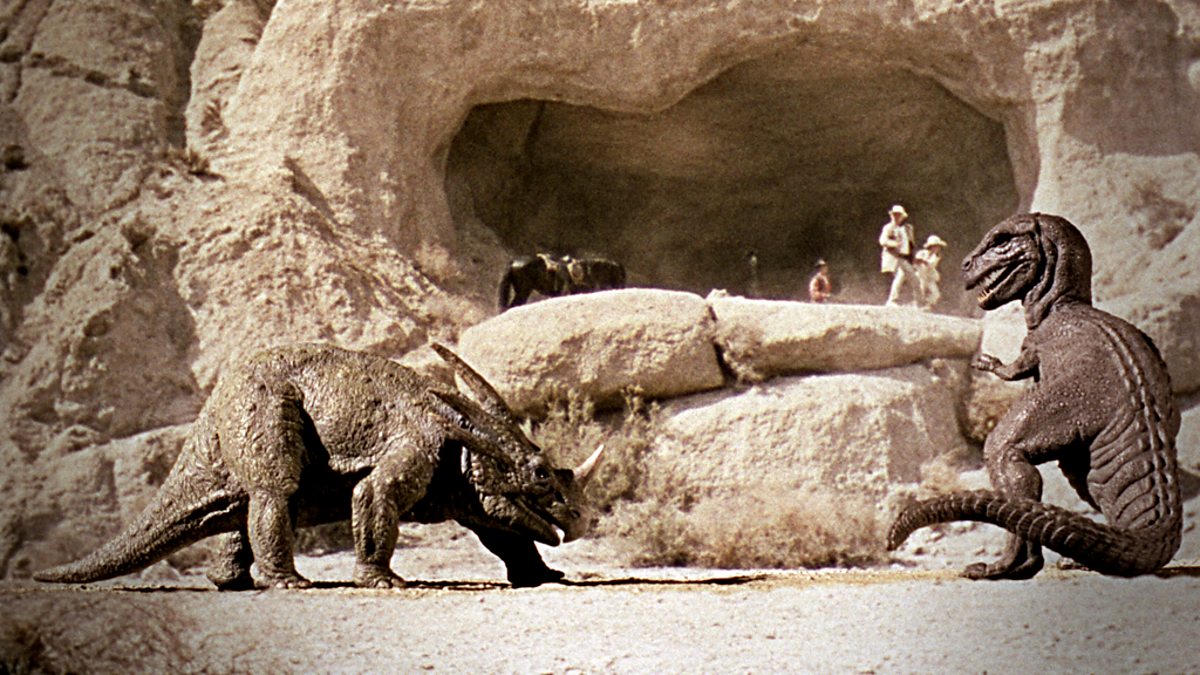
Man Bites Dog 1992

This one is not for the faint of heart, in fact I strongly advise viewer discretion.
In the early 90’s a media created storm was swirling over the movie industry, instigated by the release of a number of violent movies that were plaguing our wholesome cinemas and video stories and supposedly grooming our children into sadistic serial killers in the making. In the midst of this slew came allegations of copycat murders and acts of violence that were alleged to inspired by movies, with little actual evidence.
Outrage was directed at films like Reservoir Dogs, Natural Born Killers, Romper Stomper, Bad Lieutenant and even some tame affairs like Falling Down were bundled into the pack to make up the numbers. 1986’s Henry: Portrait of Serial Killer was rediscovered by public guardians just to scream and yell at it with disgust.
For a film fan like me to express a love for any of these films was tantamount to outing myself as a sicko, as if the gore, violence and cruelty were the only aspects that could possibly be enjoyed about them. Simple fact is these films were creatively among the most exciting being produced at the time, yet it was hard to convince those that I was having to continually having defend myself against. The stigma only got worse when films like Reservoir Dogs were prevented from being released on video in the UK and others such as Natural Born Killers were banned outright for a while.
Strangely, one film that slipped through the net was one that may have been one of the most graphic and disturbing of the bunch. It was Man Bites Dog from Belgium which made it into Cinemas and onto video without any hassle or outrage or even any massive editing. This is possibly because it was black and white and subtitled and hence an “art movie” and nothing to worry about because no one goes to seem them anyway, except for arty types who aren’t liable to go shooting up a McDonalds on the ride home. I did go see it, at the smallest screen in the Meadowhall cinema complex in Sheffield, late at night for it’s one and only screening there.
Man Bites Dog is a sort of found footage movie (seven years before that term really became a thing) featuring the work of a documentary crew making a film on the day to day life of a serial killer Ben(although he’s more like a mix of a gangster and professional thief who murders his victims). It’s extremely violent with Ben carrying out graphic murders throughout, his victims include men, women, familes, children, the elderly and a large number of postmen.
It’s disturbing and unsettling. Especially due to the fact that it’s also funny, very, very funny.
Man Bites Dog is a black comedy and some may baulk at the humour of Ben sitting over the corpse of a young woman and explaining the ratio for loading a body with weights to sink it (apparently dwarfs are complicated) or admitting he doesn’t have the knack for killing children as he smothers a boy with a pillow. However the humour in a way is comforting as it’s ludicrousness takes the viewer out of the film and affirms it as a satire and the killings a fiction as opposed to the horrifying realism of say a film like Henry: Portrait of a Serial Killer.
Some moments are genuinely witty and laugh inducing, like when Ben shoots a loudmouth friend at a dinner and the blood splattered guests awkwardly carry on with the meal. Or when the crew encounter another documentary team following their own serial killer. By this point the crew themselves have become more implicit in Ben’s crimes, helping with trapping his victims and disposing of them after. There is even a Spinal Tap drummer style subplot where the sound recordists keep getting killed and have to be replaced.

Ben himself is a charismatic figure and at times you come close to liking him as he makes you laugh despite doing the most horrible of acts. His also incredibly intelligent, but very complex and hypocritical. One moment he’s critiquing the architecture of modern housing, decrying the use of red as it’s the colour of violence and the enemy of all civilisation and then in the next scene is seen killing a worker on a building site. He has a strange understanding of his own morality, expressing sympathy for a family he has just murdered in their home (he carries out the murders at the pressing of the camera crew) as the cash found in the house is small and not worth the deaths and he mutters “there should be a law against it.” Likewise when the tables are turned and his violent career catches up with him at the expense of his family and loved ones he doesn’t recognise the karma and wails at the unfairness of it all and there is a satisfaction to be had in seeing him reaping the misery and distress he’s inflicted on others.
It’s a powerful movie and an effective satire on violence and the film industries exploitation of it. There are several times when the film goes too far. Most notable is a gang rape scene and violent aftermath, a misstep in the film but does at least put the viewer back on track with condemning Ben for his actions.
Man Bites Dog was embraced by the critics and won a string of awards including the Critic’s Choice award at the Cannes Film Festival. It’s not for everyone, but it’s a clever film that disturbs and causes laughs throughout.

Rumble Fish 1983

I was about 14, it was the end of the school year and as is tradition some of the teachers started to not give a fuck and in order to keep us little shits quiet as the countdown to Summer commenced they wheeled the school TV and video into the classroom and stuck a film on that they could loosely claim had some educational merit. In English class we got to watch The Outsiders, directed by Francis Ford Coppola and based on the novel by S E Hinton.
I was enjoying this film of teen angst of Greasers vs Socs, but unfortunately the rest of the class were largely yobs and commandeered the remote control so that they could “put fookin feighting bit on!” (translation “fast forward to the fight scenes”). As such I got a fractured viewing of The Outsiders, but saw enough to want to see the whole thing and didn’t have to wait long as BBC 2 just happened to show the film not long after.
Rather creatively BBC 2 showed Outsiders as a double bill, following it with Rumble Fish also directed by Francis Ford Coppola and also based on a S E Hinton novel and in some ways a spiritual follow up to Outsiders.
After finally getting to see without interruption the rough but enchanting and triumphant Outsiders, I left the channel on and began to watch Rumble Fish and soon would feel my jaw drop as one of the coolest moments in film played out on the mini tv in my bedroom.
Filmed in stark black and white, Rumble fish has a more downbeat mood than Outsiders, following Rusty played by Matt Dillion a street kid and the younger brother of a gang legend referred only to as Motorcycle Boy. Early on I was gripped by the build to a streetfight to take place between Rusty and a rival gang member Biff in an abandoned warehouse. The fight is vicious, with a dangerous vibe since Rusty’s opponent has arrived high on drugs, out of control and armed with a knife. Rusty wins the fight, but as his brother arrives on the scene on his motorbike Rusty is distracted and is cut by a blade of glass from his battered opponent.
Then came that moment!
Motorcycle Boy, (played with delicious cool by Mickey Rourke) with a slight expression of anger revs up his motorcycle, aims it at Biff and lefts the bike fly loose like a missile ramming into the celebrating hoodlum and sending him flying into the air.
I can’t remember what I yelled out but it was probably something like “Jesus Christ!” or “Holy Shit!” If I’d been watching it with the yobs who’d ruined my Outsiders viewing they would probably have demanded the tape be rewound to watch it again. And I wouldn’t have blamed them, because the scene is stunning in it’s inventiveness and executed so spectacularly that you wondering how a life wasn’t lost in filming it.
Rumble Fish focuses on the close but fractious relationship between the two brothers. Rusty idolises the legend of Motorcycle Boy and longs to follow in his footsteps and for his brother to return to the glory of his gang leading days so they can rule the streets together. For his own part Motorcycle Boy is trying to leave those days in the past and tries to convince Rusty not to follow the path of his youth. Added to the volatile conflict are their drunken father (played by Dennis Hopper) and a Police Officer with a long standing grudge against Motorcycle Boy. Throughout you get the sense that the streets are going to have their way with at least of the brothers.

Rumble Fish apparently bemused critics on it’s release, whereas I personally loved it. The violence of the rumbles early on caught my attention but it only served to pave the way for the personal story of the brothers struggles to find their identities, one trying to make a legacy and one trying to escape his. The Black and White is striking, helping to bring forth the stark, grittiness of the streets but at the same time also represents Motorcycle Boy’s colour blindness. This leads to the one effective use of colour found in the Siamese Fighting Fish at the petshop that Motorcycle Boy becomes obsessed with. The violent nature of the fish to attack each other and continually fight are symbolic of the lives of the brothers and ultimately leads to the film’s dramatic conclusion.
Despite being received poorly by critics and audiences Rumble Fish has thankfully since found it’s cult audience. It’s a fantastic looking film, with great, subtle performances (look out for brief appearances by young Nicholas Cage, Laurence Fishburne and Chris Penn as members of Rusty’s gang) and symbolism that makes a second viewing a rewarding experience.
Bitch Slap 2009
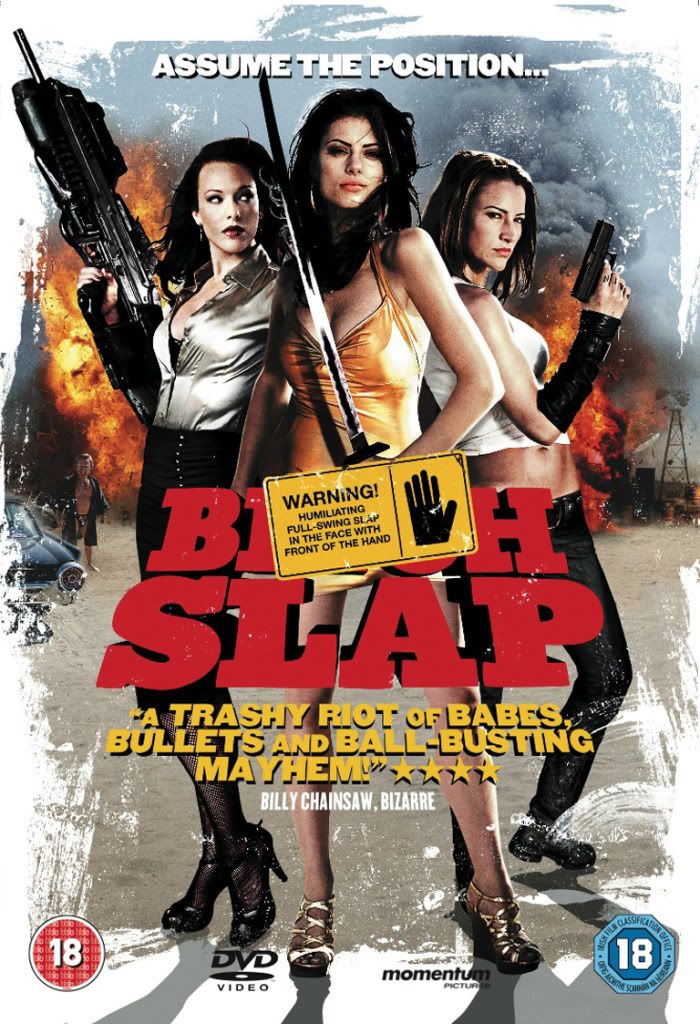
Oh My Word! What the hell was I thinking covering this one? I am going to have to work my arse off to justify this choice.
I can already feel you judging me, but look at this poster: Billy Chainsaw of Bizzare enjoyed it.
For a lover of B-Movies and straight to video/DVD fare like me, streaming services like Netflix and Amazon Prime are a Godsend, with their steady supply of weird, wonderful (and lets face it, cheap to acquire) and often complete trash of films that wouldn’t (and often shouldn’t) find their way onto a television screen. However I’m not a complete fool for these movies. For every one that I reach the end credits of having enjoyed and consider it a dirty gem that only I can see the beauty of, there are twenty more that I’ve switched off after fifteen minutes of dismal crap, regretting the quarter of an hour wasted that I could have been watching Bart Gunn knocking out JBL ten times on a loop.
When I watched Bitch Slap on Amazon Prime I almost gave up after three minutes.
The opening tests the boundaries of tackiness, as three sleazily dressed hot women (Trixie a stripper, Camero a psychopathic ex-con and Hel a vampish business woman) arrive at the desert hideaway of a gangster Pinky in search of hidden loot. The camera zooms in and lingers on the women’s bodies and assets with salacious close ups and slow motion in such an over the top exploitative manner that left me incredulously bemoaning how such scenes could be deemed acceptable in the 21st century. My reach for the Roku remote was furthered even more once these ladies opened their mouths, spouting the most cringeworthy dialogue and exaggerated delivery of lines I’d normally associate with people running for political office.
Then as the film became more and more over the top I started to recognise the self awareness of the film that helped me get the gag. At least I think it was a gag.
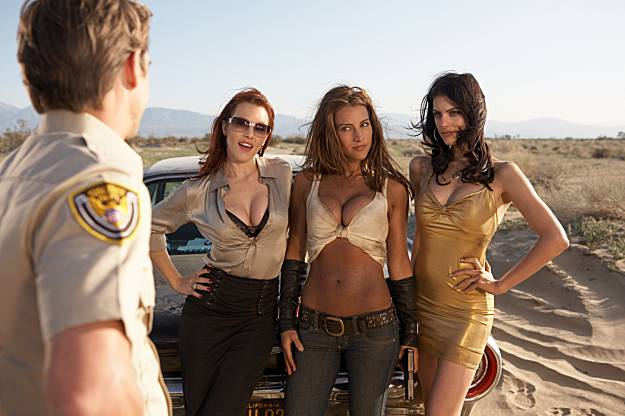
Bitch Slap is intended as a homage, parody, throwback (call it what you will) of the exploitation films of the 60’s and 70’s, in particular the tough babe movies such as Faster Pussycat Kill Kill. The film is exploitative in itself as cashing in on the interest in Grindhouse style sleaze that followed Tarantino and Rodriguez’s doublebill feature several years before Bitch Slap, while there’s also a hint of the style of the cartoony elements of Sin City.
And as I continued to watch and while I rolled my eyes with a tut tut at such tacky elements as the slow motion shower scene and the obligatory lesbian sex interlude I found myself actually starting to enjoy Bitch Slap and no not like that you dirty minded buggers!
A series of Flashbacks (each one going further and further back) begin to reveal the girl’s various pasts and agendas and the history of the caper they have found themselves involved in. These scenes are complimented by some suitably dodgy, cartoonish CGI backgrounds and have wonderfully random cameos from Lucy Lawless and Renee O-Connor from Xena and Kevin Sorbo from Hercules. Meanwhile in the present day the girl’s begin to doublecross each other and as revelations abound the caper descends into an outrageously action packed battle royale. Cheesy one liners are thrown around with glee as things get bloody amidst explosions, machine guns, fire, swords, chains and the most hilarious fist fight ever between Hel and Camero who exchange a preposterous amount of blows in a back and forth that goes on for an eternity.

I can still feel you judging me.
For all it’s claims to be “a Post modern, thinking man’s throwback to b-movies” Bitchslap was absolutely savaged by what critics bothered to watch it. Even recognising the winks to the audience, it’s intention to parody and homage, it was branded with a variety of insults such as being unsubtle, pure soft core titillation, lacking the substance or insight to be a true homage and above all in no way fun. (There was also a scattering of disapproval from some reviewers disappointed by the lack of real nudity from the girls).
Yet I did find Bitch Slap fun. Could I ever hand on heart defend it as “good?” No, probably not. But for a couple of hours it entertained me, showered me with eye candy and made me feel like I was in on the joke with the film. A joke that it screamed out without an attempt to add irony and ran into the ground with a gleeful abandon and just when you thought it had stopped drilled it deeper and deeper. It was never boring, which is the greatest sin a film can ever commit.
Truth be told, I found this much more a pleasing viewing experience than the self indulgence and boredom inducing pace of Death Proof. (Incidentally, Pete Chiarella who lived through the Grindhouse era in New York claims DeathProof missed the mark and would not have lasted a weekend at those cinemas. He was more kind to Planet Terror which he said was more like real Grindhouse.)
You’re still judging me aren’t you? I can’t say I blame you.
Til next time then, when I present to you : Rutger Hauer hunts a member of KISS, a classic 1930’s comedy team go to War, Iranian women go to a football match and Hannibal Lecter takes on Negan in a western.
Dazza (holding his head in shame).


